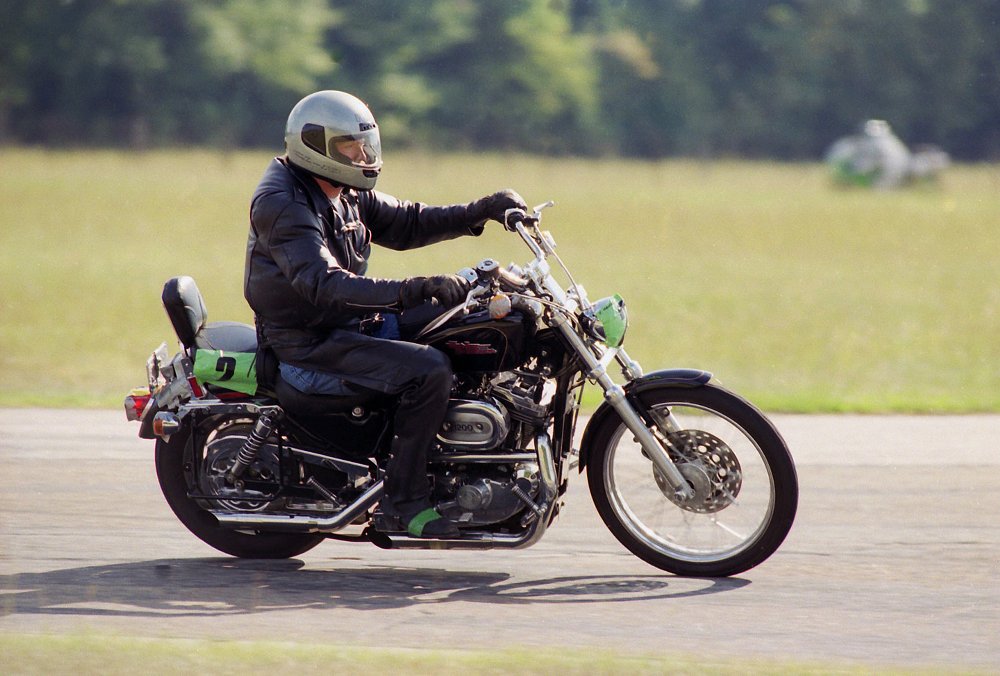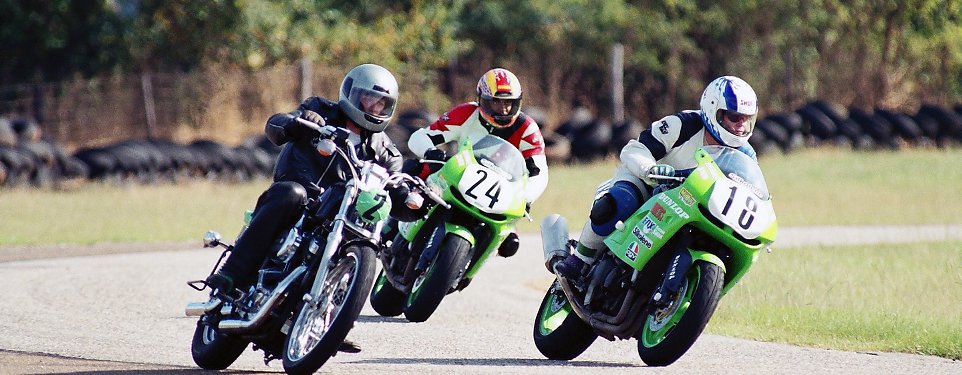Looking around the paddock at the Talladega Gran Prix Raceway, I realized that I looked like the guy who showed up at his sister’s wedding in a T-shirt and shorts.
Wearing my black leather jacket, square-toed boots, gloves and chaps, I got the same kind of disapproving looks from the riders in full racing leathers gathered for the riders meeting at the beginning of the Keith Code California Superbike School. Normally, I’m the one laughing at guys dressed in those clown suits, but I played it cool and let them think I must have gotten lost on my way to Daytona.
The words “Superbike School” and “Harley-Davidson” are seldom found in the same sentence, but that doesn’t mean you can’t learn the art of cornering on a Harley. Having already completed the beginner and advanced courses offered by the Motorcycle Safety Foundation (both of which I highly recommend), I was ready to leave the parking lot and move on to some advanced training. I decided to push the envelope and sign up for Keith Code’s California Superbike School.
In case you don’t know, Keith Code was a successful road racer in the 1960s and 1970s who was the first to start an actual school for training fellow racers back in 1980. Since then, he has taught over 100,000 riders, from AMA Superbike champions to amateurs like me, how to use his techniques for proper cornering, braking and overall riding.
Students have the option of riding their own bikes or renting one from the school (the current rental is a BMW S 1000 RR). I decided it would be best to learn on my own bike. Not wanting to make a total fool out of myself or leave the track covered with parts, I left my vintage bikes at home and took my “fast” bike, a 1996 XL1200C Sportster. It’s definitely not a sport bike, but with mid controls and mild performance upgrades, it’s more nimble than my old Panhead.
To add to the adventure, I also decided to ride from North Carolina down to Talladega, Ala., for the class. Well, maybe “adventure” is the wrong word. Riding a Sportster 500 miles in one day is borderline torture, especially in heavy traffic, unless you’re a big fan of buffeting and vibration.
After a full day of riding, I rolled into the hotel completely exhausted, but with several hours of work still ahead of me to transform the bike into track mode. I had purposely selected lodgings that were about three stars short of a four-star rating, so I had no qualms about pushing my bike inside my room and wrenching between the bed and air conditioning unit. Out came the tools and off came the windshield, mirrors and bags, followed by taping over all the lights.

The class was held at the Talladega Gran Prix Raceway, a 1.4-mile road course located not too far from the NASCAR track Talladega is famous for. We started with a safety meeting in the pits, which covered the normal rules of track riding, as well as some cautionary tales of riders who had ridden into the woods after missing a turn. That got me thinking. Then they pointed out the ambulance parked next to the track, and I was wondering if I was in over my head.
At least among all the sport bikes and race leathers, I did spot one older rider who was more “normally” dressed, so I walked over to see if maybe he was also on some type of cruiser. Turns out he was on a Gold Wing, which gave me hope that I wouldn’t be the slowest bike on the track.
On the plus side, our instructor mentioned that the fastest bike he had ever seen in the turns at Talladega was a Harley Softail with ape hanger handlebars. This comment garnered more than one appraising look back at my Sportster, and I just nodded like I was going to be doing the same thing.
So the real question is, “How did I do?” Narrow tires and a low-mounted kickstand did a good job of keeping my speed at a reasonable level, and as you would expect, the bulk of the riders had no problem outpacing me and my Sportster. I was able to pass a few, including the Gold Wing, but for the most part I cruised around the track looking completely out of place, but having a great time.

Code has updated the school’s curriculum over the years and added technology, such as bikes customized with outriggers that allow riders to safely practice leaning fully into a turn, locking up the front brake and controlling rear-wheel slides. But by far the most beneficial part of the class for me was the one-on-one instruction. The classroom sessions address the six most common errors and how to avoid them. On the track, your riding coach follows behind to see what you are doing right or wrong and then provides personalized instruction during the off-track sessions. I have spent years blissfully unaware of what I was actually doing while riding a motorcycle and found that with the insightful pointers provided by my coach, I was able to dramatically improve my riding in just one day.
The other benefit to the class and track riding in general is being able to repeat the same turn over and over again in rapid succession and focus on what my bike and I could do. In normal, everyday riding, it’s hard to experiment with different lean angles, entry points and exit points when you have to worry about cars, stray cats and the like. The track environment allowed me to build confidence and become much more in tune with my motorcycle.
So the real answer to the question of “How did I do?” is that I did just fine. I left the track a better rider than when I started the day. That’s the real goal of a track day or a class like the California Superbike School, not setting a new track record.

You know, the 1946 Harley WR was pretty dominant on the track in its day. For my next track day, I think I need to build a WR…








